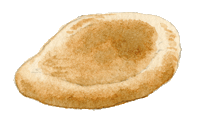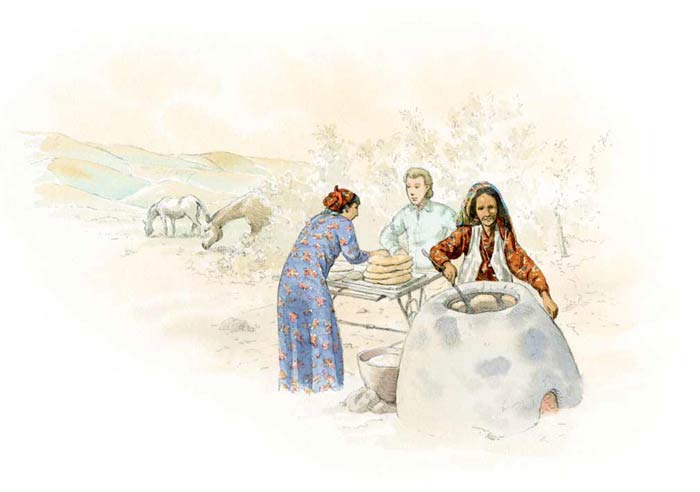Chorek

Form: Large griddlecake, 30 to 50 cm in diameter
Country of origin: Turkmenistan
What distinguishes it from other methods of bread making: Large griddlecake made with leaven and baked in a tandoor clay oven
Category of bread: (2) Between the large Indian family of naan, a Muslim contribution, and the extremely rich Indian (Hindu) tradition of bread making
Particularity: Can weigh up to two kilograms
Ingredients: Whole-wheat flour; leaven or yeast; water; fat; salt

Turkmenistan
In the world of Central Asian flat breads, let’s say from Iran to Bangladesh and from Southern India to Turkmenistan and northern Uzbekistan, the majority of bread circles are unleavened, meaning no ferment is added. Indian roti (or chapati) is probably the most famous representative. There are however flat breads made using a dough that has been left to rise for a long time before putting it in a tandoor clay oven. This oven is called a tannur in the Middle East, and consists of a vertical oven with an opening at the bottom for fuel and another one at the top for the bread. The bread is most often thrown onto the sides of the oven. It was the Muslims who arrived in these parts in the 8th century, and spread their custom of making risen breads, which are still found among most of the peoples in the region. Chorek is therefore the risen bread of the Turkmen, and mostly consumed by them.
The large griddlecakes sometimes measure as much as 50 cm in diameter, and can weigh up to 2 kilograms. They are at the heart of the Turkmen diet. They eat them both hot and cold, or they dunk them in their tea when they start to dry out and become hard. There are a few simple rules for starting the fermented dough. Using a mixture made up of whole-wheat flour, water, fat (Turkmen women often use grilled lamb fat), leaven or yeast, and salt, a homogenous dough is obtained through kneading. It is then left to rise for 2 or 3 hours in a temperate place. This mass of dough is then divided into dough rolls that are rolled out with a rolling pin to form large circles, then after a relatively short finishing time, they are thrown onto the walls of the tandoor oven. Choreks are usually decorated before eating by lightly pricking the surface to etch geometrical figures in it.

